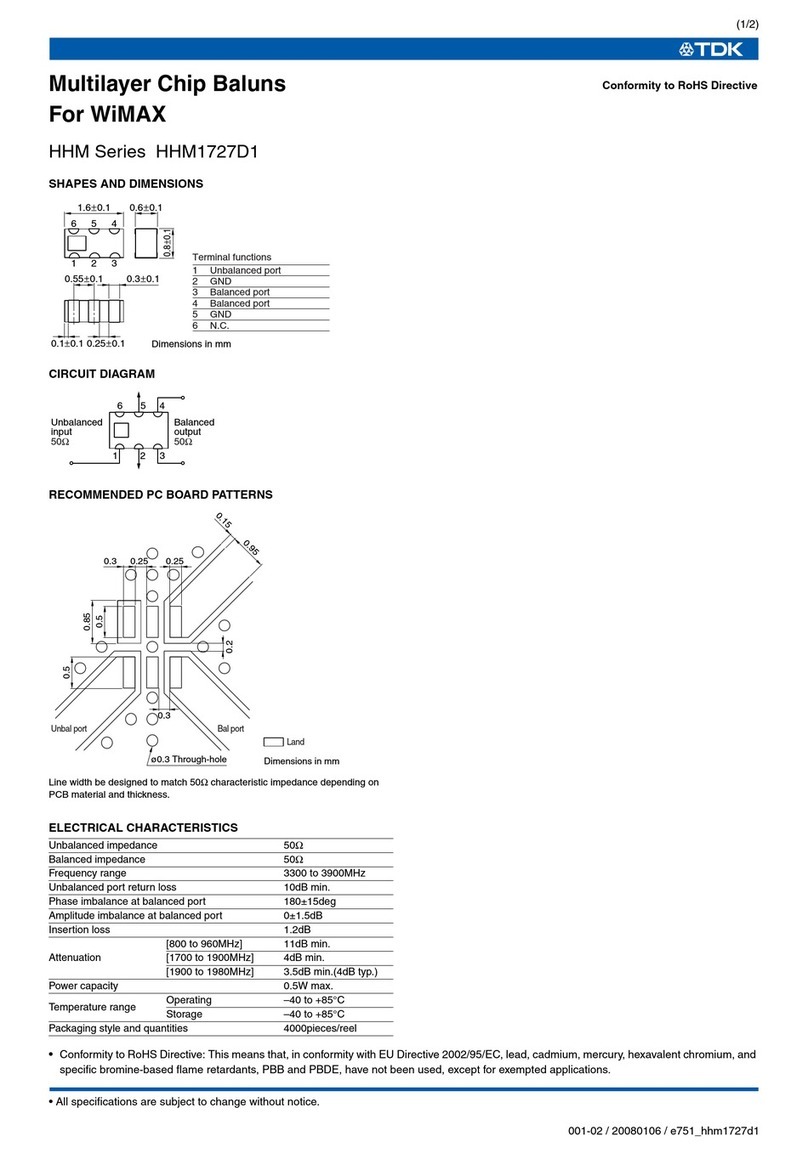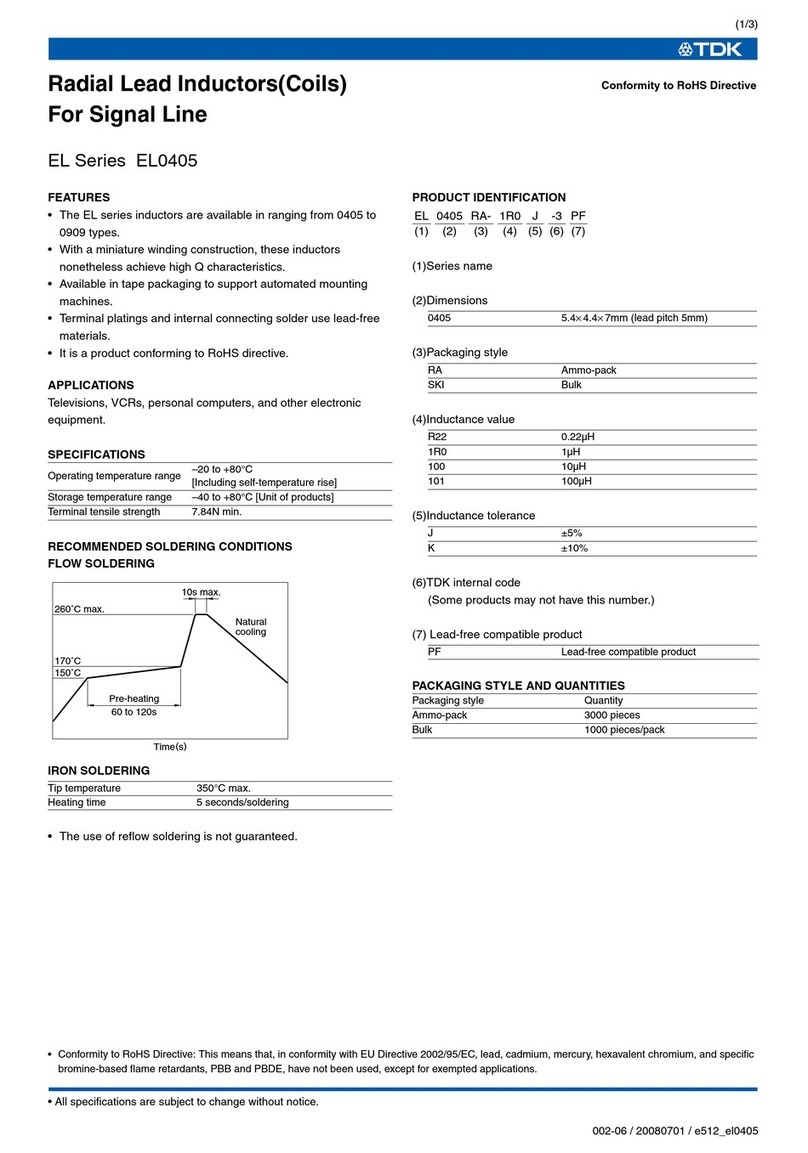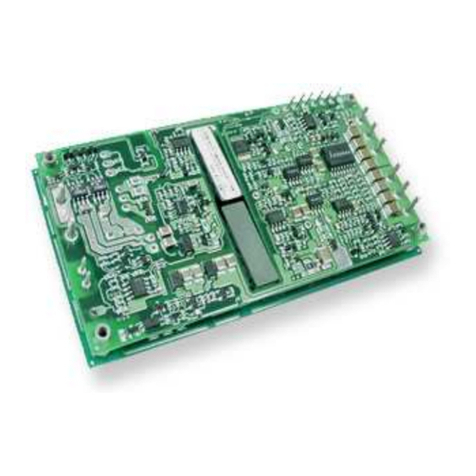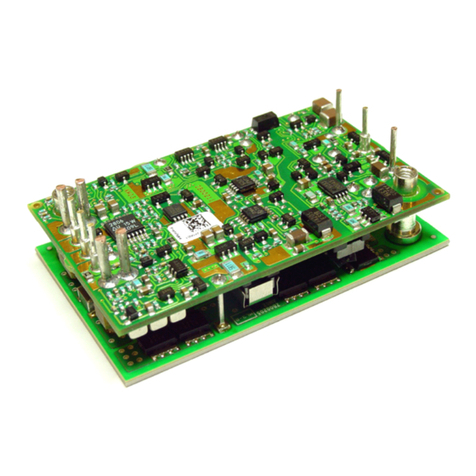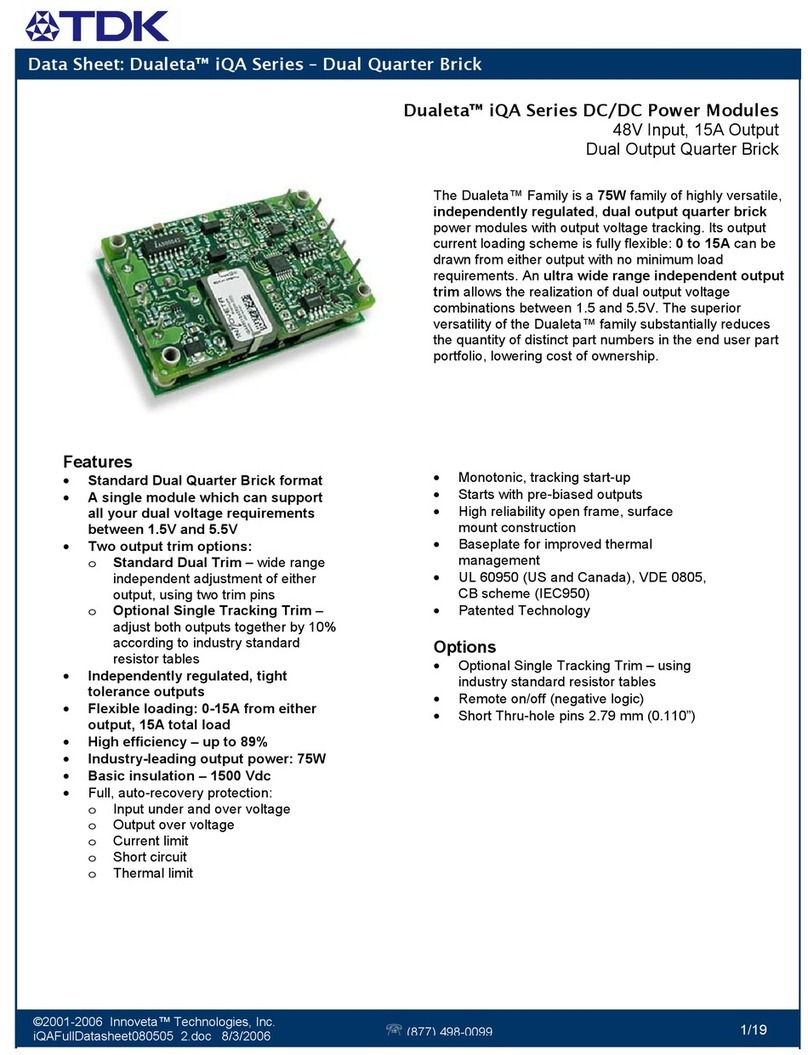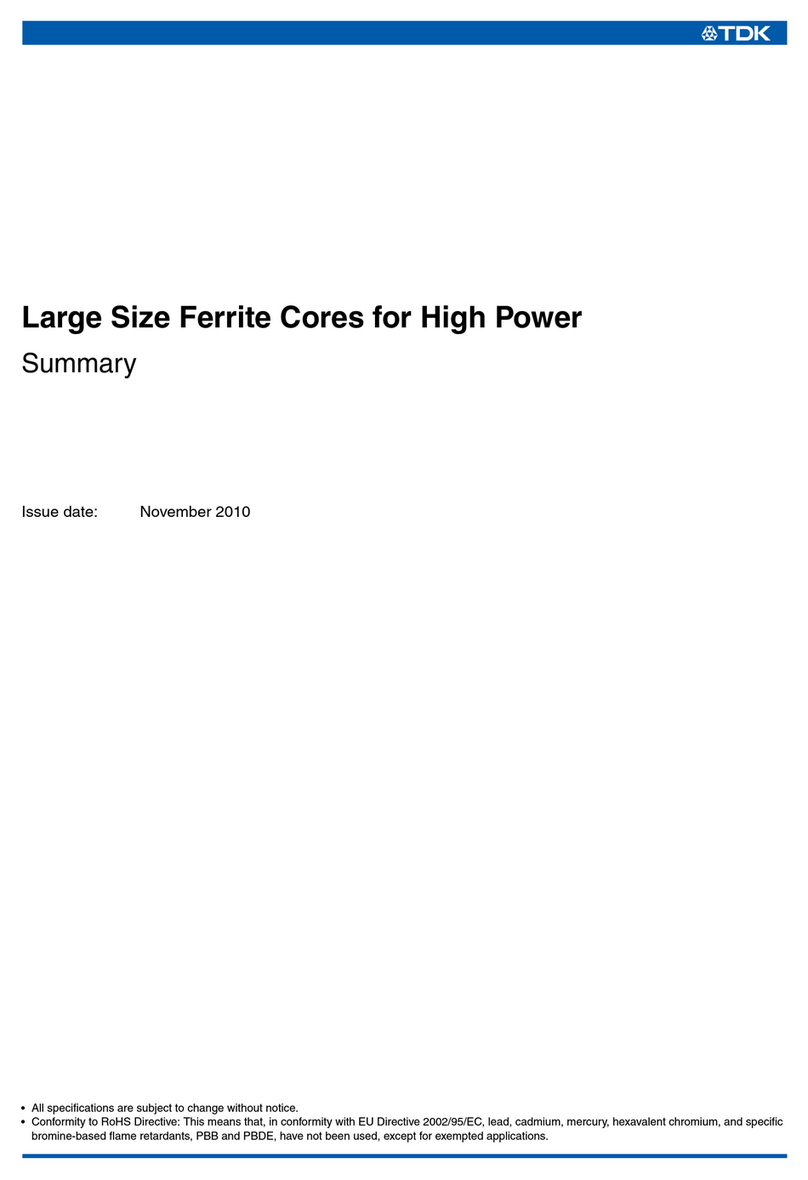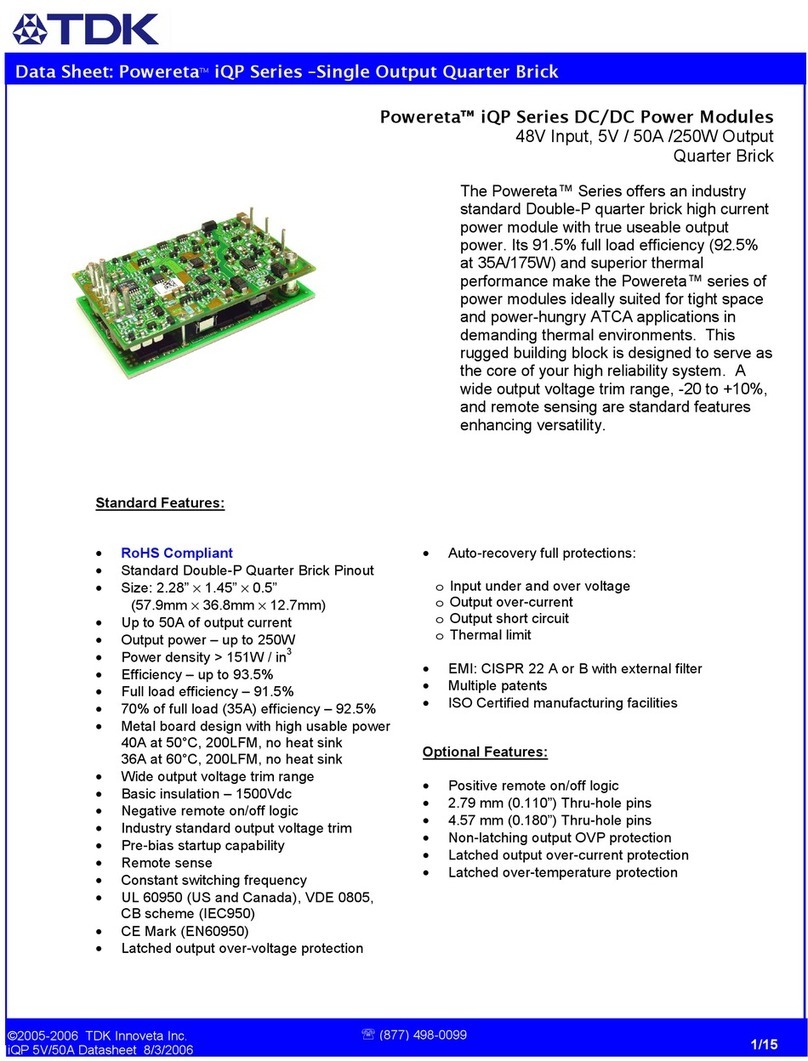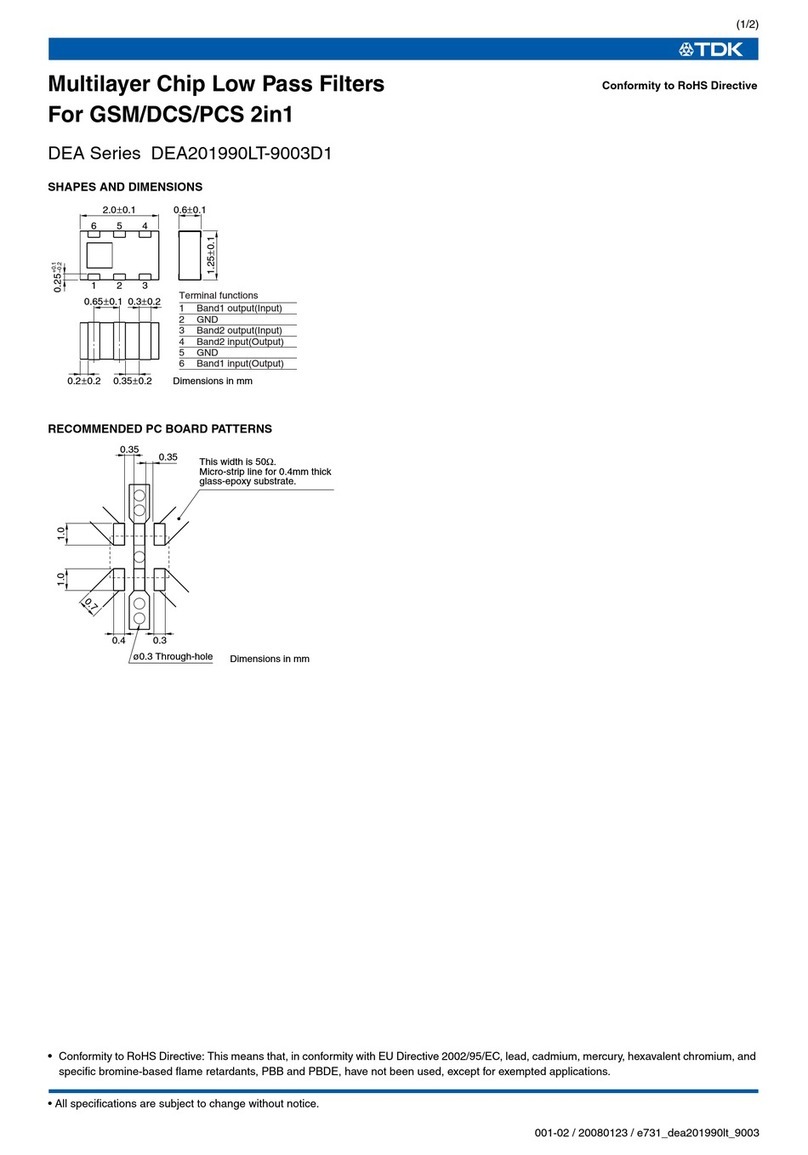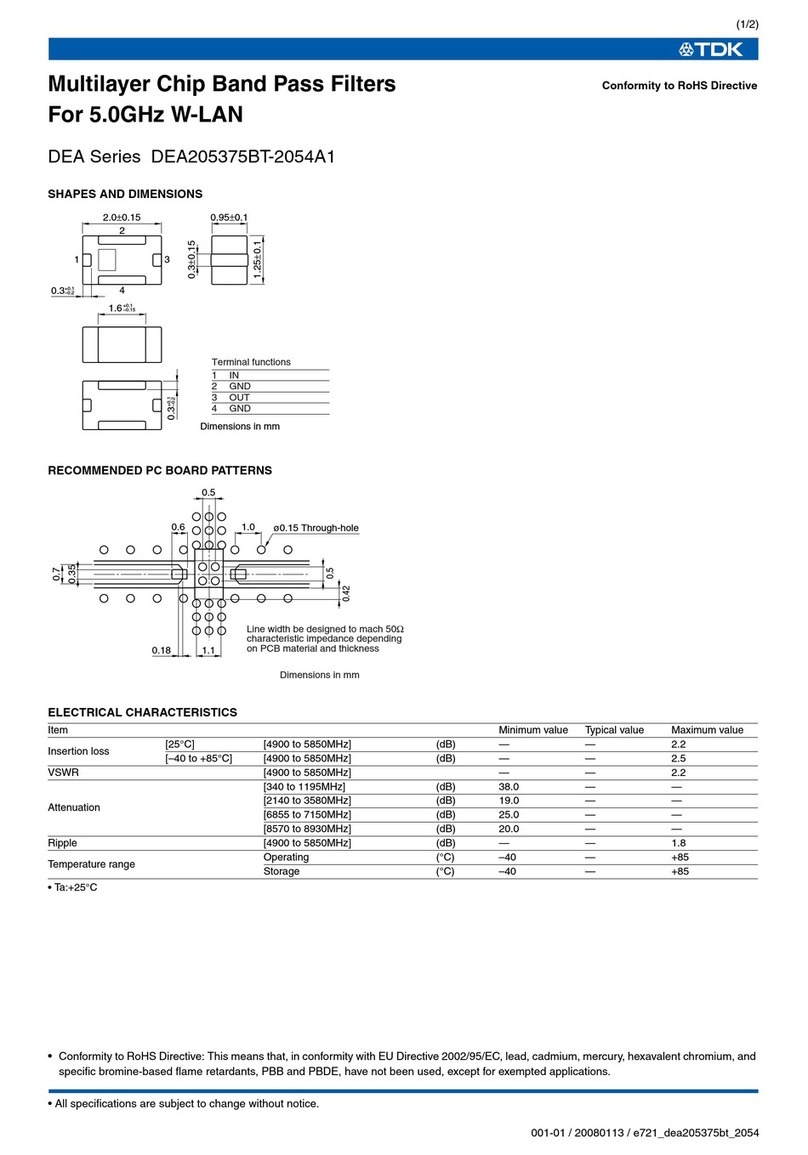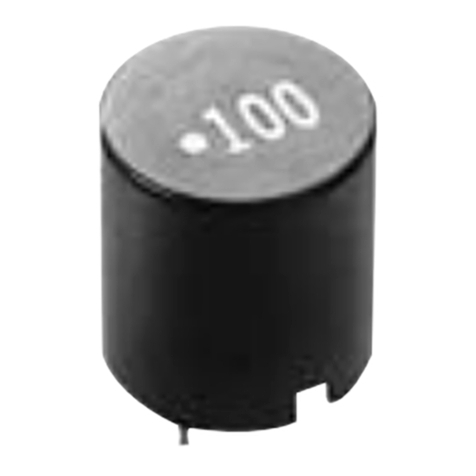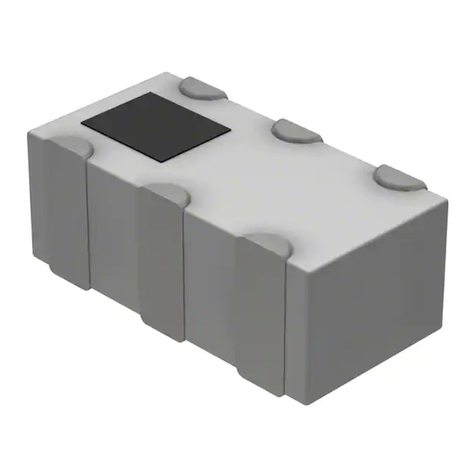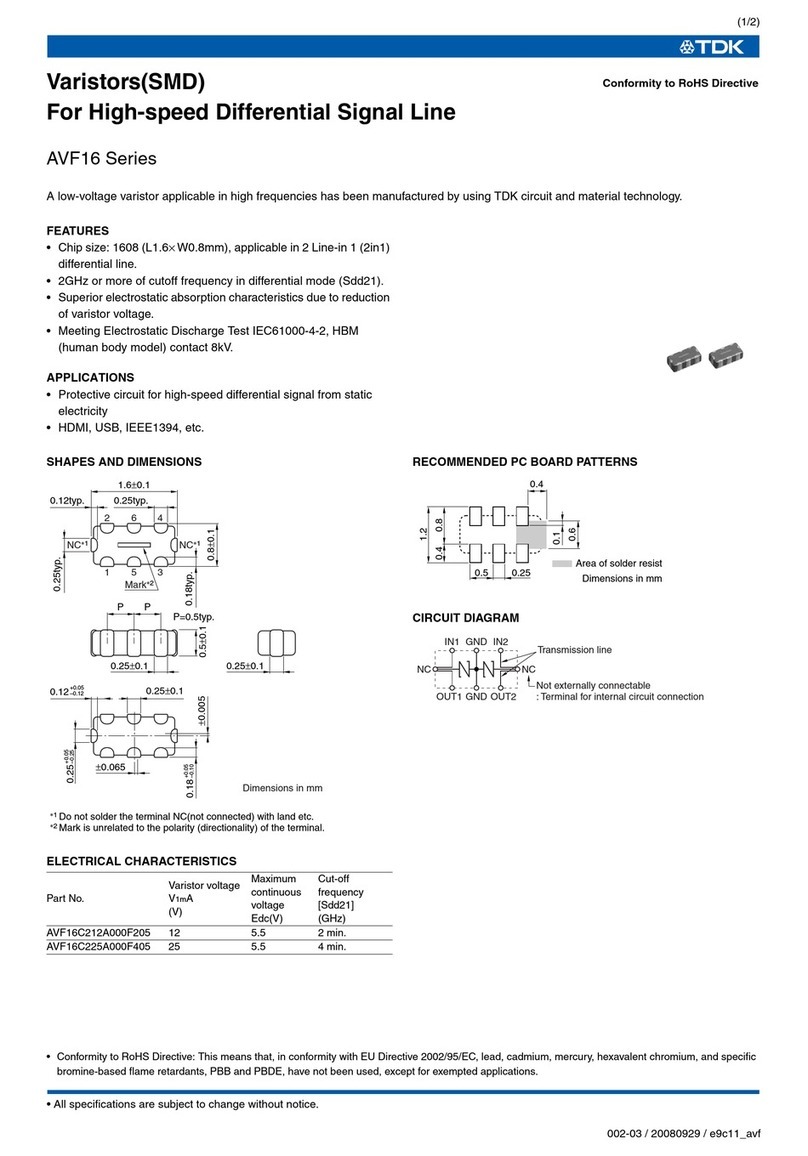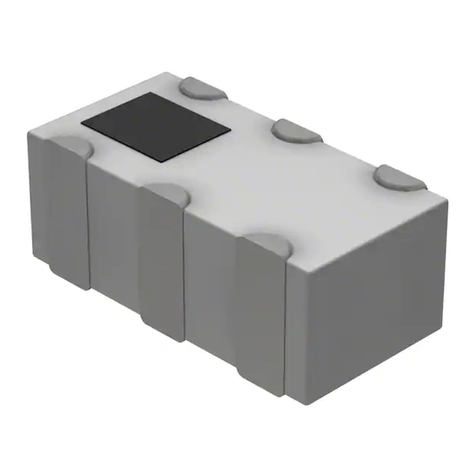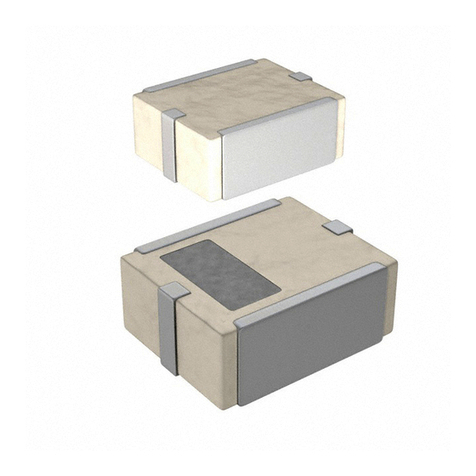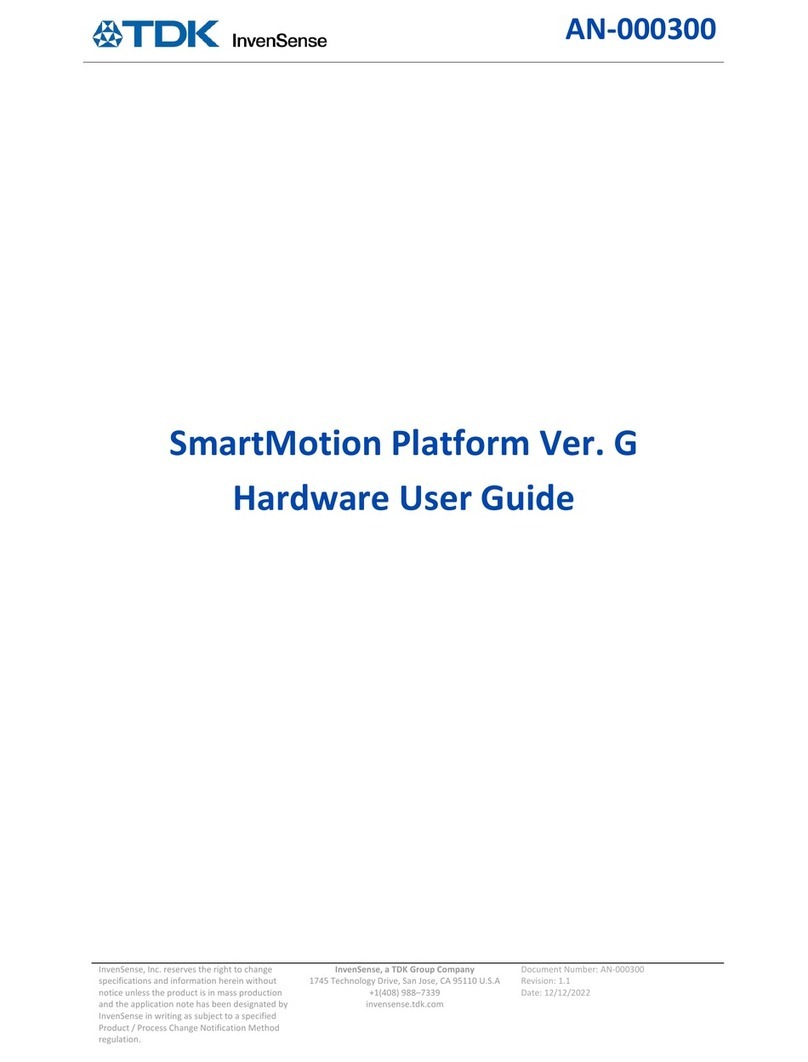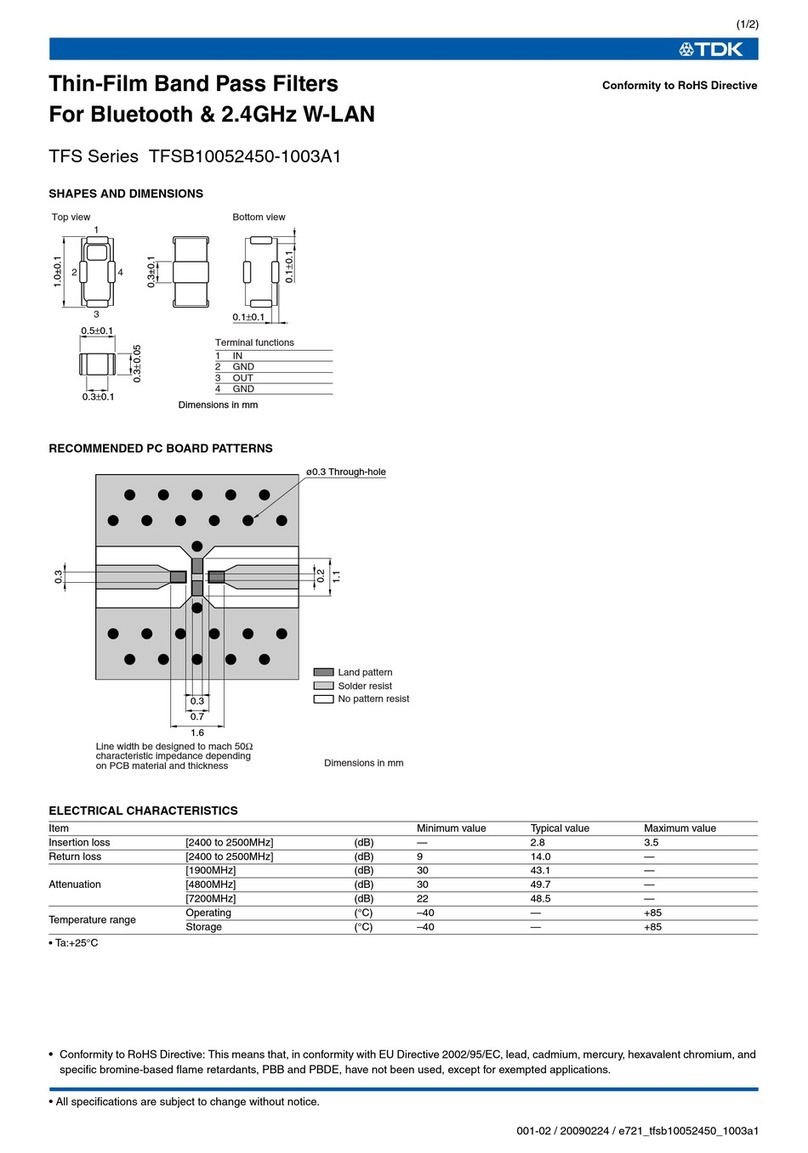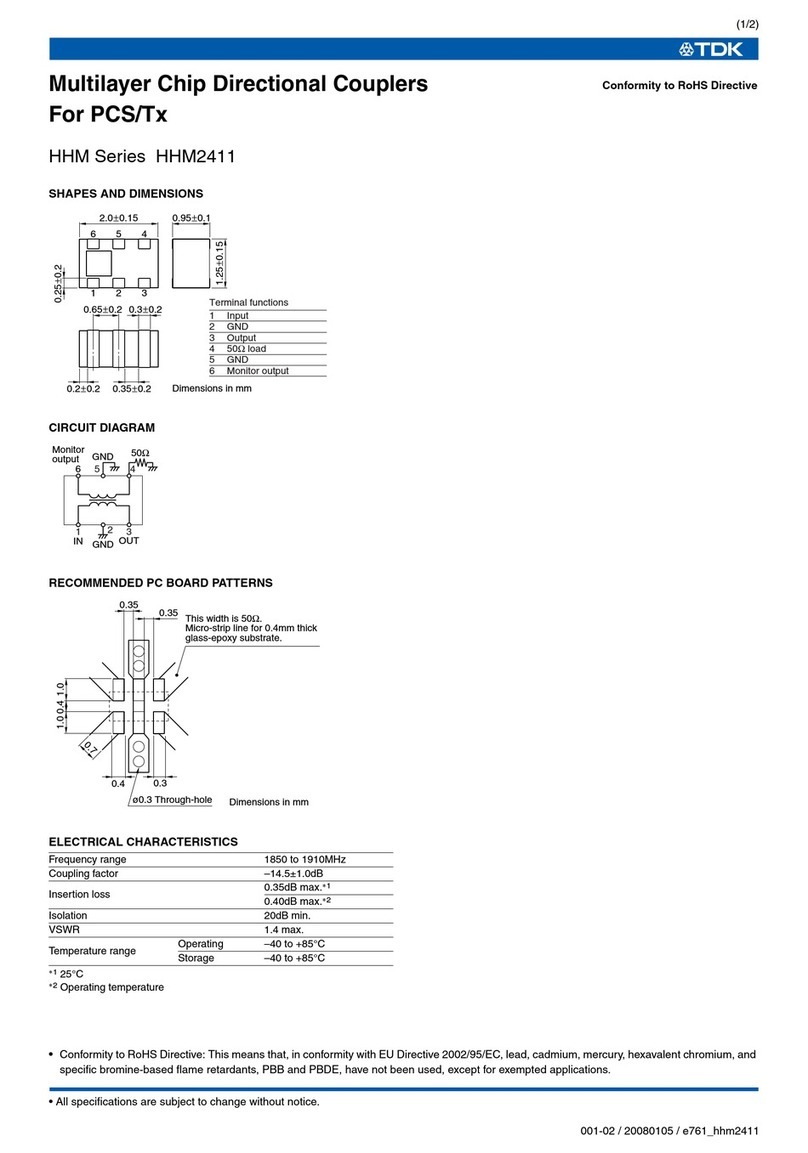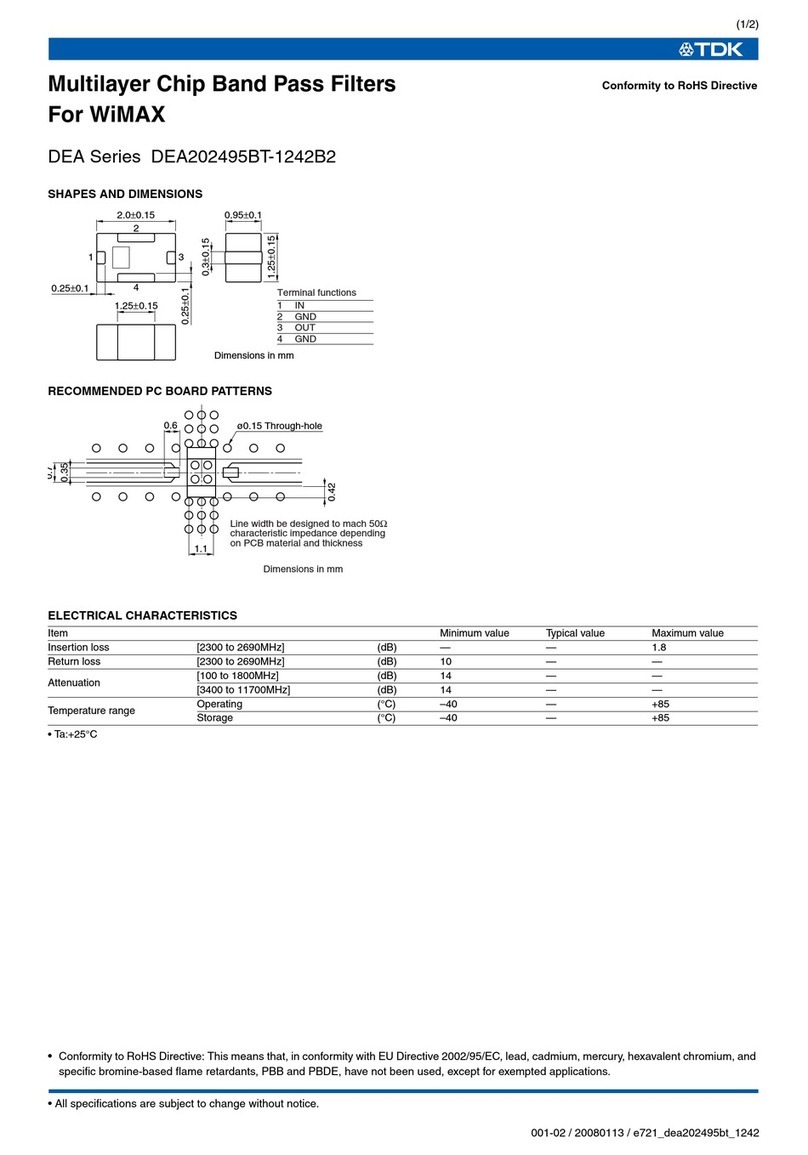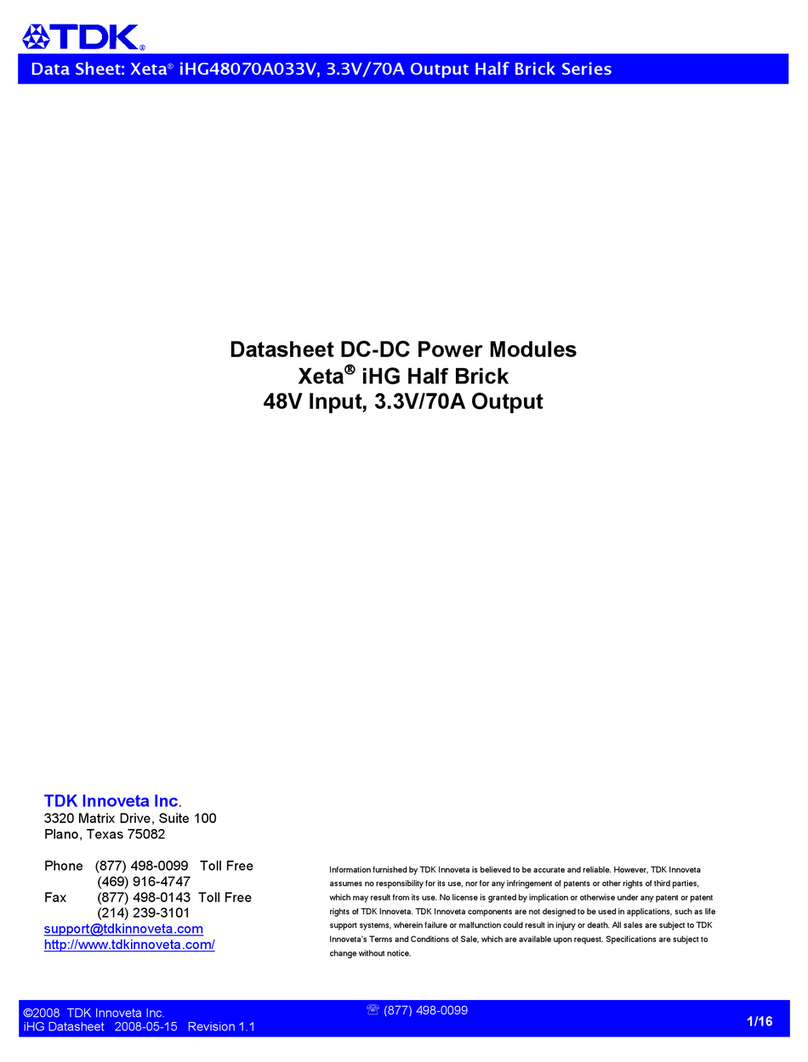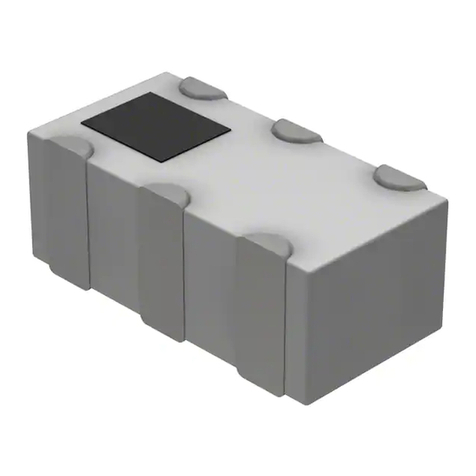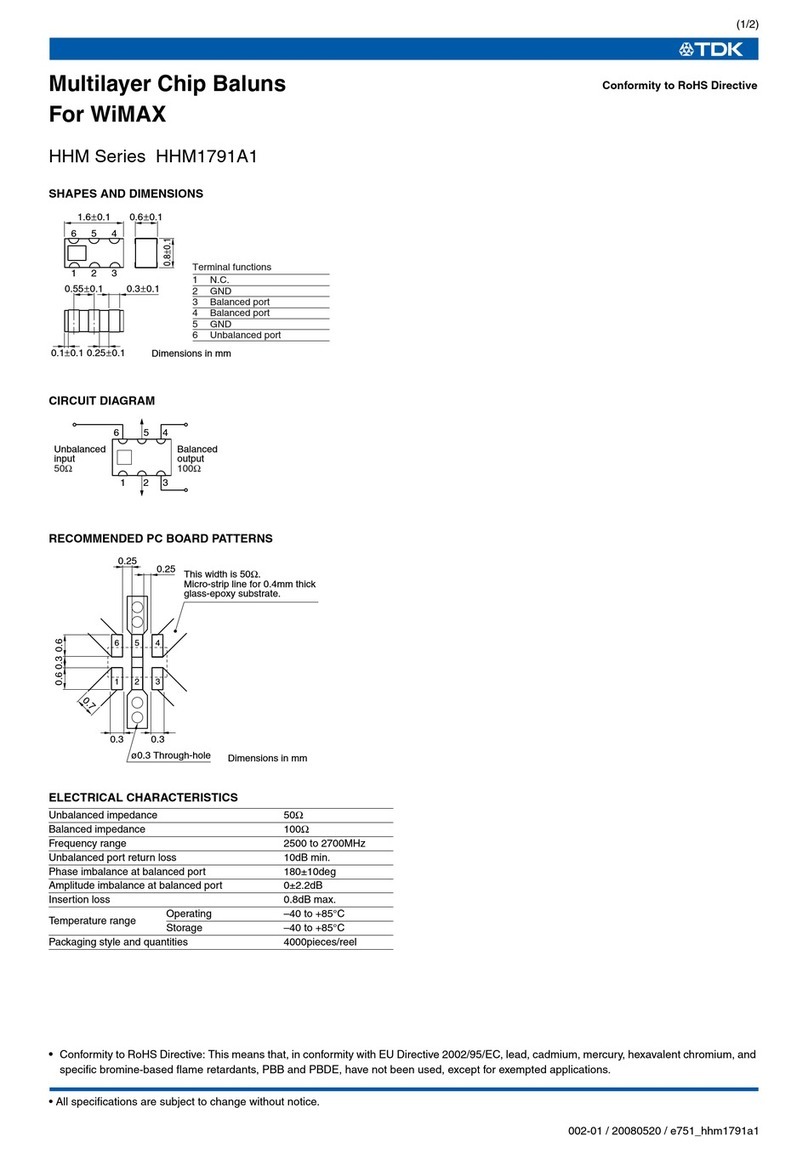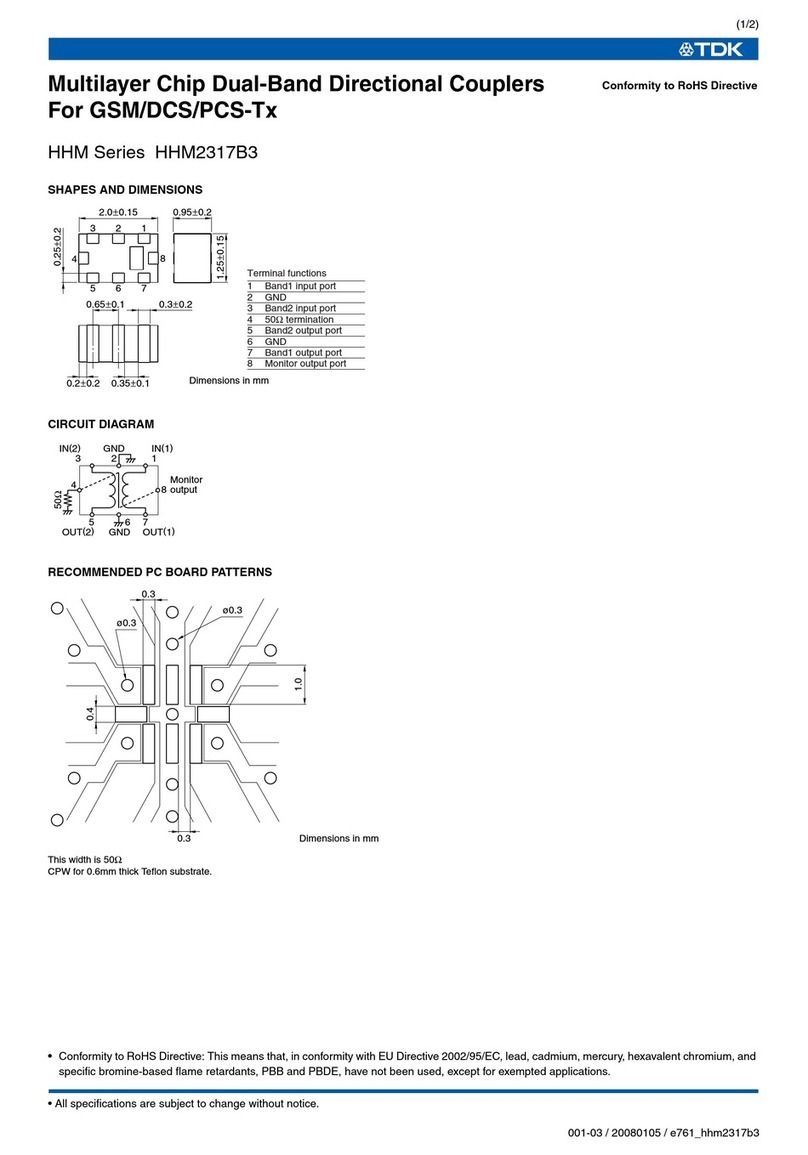
Advance Data Sheet: FReta iEB Series –Single Output Eighth Brick Bus Converter
©2004-2007 TDK Innoveta Inc.
10/29/2007
9/12
Wind Tunnel Test Setup Figure
Dimen ion are
in millimeter and (inche ).
Thermal Management:
An important part of the overall y tem
de ign proce i thermal management;
thermal de ign mu t be con idered at all
level to en ure good reliability and lifetime
of the final y tem. Superior thermal de ign
and the ability to operate in evere
application environment are key element
of a robu t, reliable power module.
A finite amount of heat mu t be di ipated
from the power module to the urrounding
environment. Thi heat i tran ferred by the
three mode of heat tran fer: convection,
conduction and radiation. While all three
mode of heat tran fer are pre ent in every
application, convection i the dominant mode
of heat tran fer in mo t application .
However, to en ure adequate cooling and
proper operation, all three mode hould be
con idered in a final y tem configuration.
The open frame de ign of the power module
provide an air path to individual
component . Thi air path improve
convection cooling to the urrounding
environment, which reduce area of heat
concentration and re ulting hot pot .
Test Setup: The thermal performance data
of the power module i ba ed upon
mea urement obtained from a wind tunnel
te t with the etup hown in the wind tunnel
figure. Thi thermal te t etup replicate the
typical thermal environment encountered in
mo t modern electronic y tem with
di tributed power architecture . The
electronic equipment in networking, telecom,
wirele , and advanced computer y tem
operate in imilar environment and utilize
vertically mounted PCB or circuit card in
cabinet rack .
The power module, a hown in the figure, i
mounted on a printed circuit board (PCB)
and i vertically oriented within the wind
tunnel. The cro ection of the airflow
pa age i rectangular. The pacing
between the top of the module and a parallel
facing PCB i kept at a con tant (0.5 in).
The power module’ orientation with re pect
to the airflow direction can have a ignificant
impact on the module’ thermal
performance.
Thermal Derating: For proper application of
the power module in a given thermal
environment, output current derating curve
are provided a a de ign
guideline on the Thermal Performance
ection for the power module of intere t.
The module temperature hould be
mea ured in the final y tem configuration to
en ure proper thermal management of the
power module. For thermal performance
verification, the module temperature hould
be mea ured at the component indicated in
the thermal mea urement location figure on
the thermal performance page for the power
module of intere t. In all condition , the
power module hould be operated below the
maximum operating temperature hown on
the derating curve. For improved de ign
margin and enhanced y tem reliability, the
power module may be operated at
temperature below the maximum rated
operating temperature.
AIRFLOW
Air Velocity and Ambient
Temperature
Mea urement Location
I
F
L
O
W
12.7
(0.50)
Module
Centerline
Air Pa age
Centerline
Adjacent PCB
76 (3.0)
